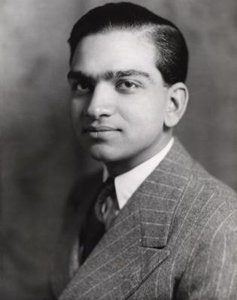 Sawai Man Singh II is one of the prominent rulers of Jaipur who ruled from 1922 to 1949. The state was one of the largest princely states which was annexed to the Dominion of India in 1949. Mainly known for his dynamic innovations Sawai Man Singh II brought modernisation in the state. Born in the royal family he succeeded Sawai Madho Singh II after his death when he was only eleven year old. Sawai Man Singh-II was born in the noble family of Thakur Sawai Singh of Isarda and his wife Sugan Kunwar as their second child. Both named him as Mor Mukut. His father was a nobleman of the Kachwaha of the Rajput clans. Mor Mukut grew up in a small village of Isarda which was the prime centre of the Rajawat clan which lies between the town of Sawai Madhopur and Jaipur in present day Rajasthan. His family had a royal origin which was well connected with the royal family of Jaipur and Kota where his sister was married. Sawai Madho Singh adopted Mor Mukut as his Heir apparent who shall be renamed as Sawai Man Singh II.
Sawai Man Singh II is one of the prominent rulers of Jaipur who ruled from 1922 to 1949. The state was one of the largest princely states which was annexed to the Dominion of India in 1949. Mainly known for his dynamic innovations Sawai Man Singh II brought modernisation in the state. Born in the royal family he succeeded Sawai Madho Singh II after his death when he was only eleven year old. Sawai Man Singh-II was born in the noble family of Thakur Sawai Singh of Isarda and his wife Sugan Kunwar as their second child. Both named him as Mor Mukut. His father was a nobleman of the Kachwaha of the Rajput clans. Mor Mukut grew up in a small village of Isarda which was the prime centre of the Rajawat clan which lies between the town of Sawai Madhopur and Jaipur in present day Rajasthan. His family had a royal origin which was well connected with the royal family of Jaipur and Kota where his sister was married. Sawai Madho Singh adopted Mor Mukut as his Heir apparent who shall be renamed as Sawai Man Singh II.
Early life of Sawai Man Singh was largely spent in training in initial customs and beliefs of the traditional Rajput family. Under the supervision of Sir James Robert customary arrangements were made for the young chief who should know the basic traditions of his own clan. After a month of Sawai Madho Singh`s death Sir James Robert insisted in educating Man Singh in Jaipur only and started a school at Rambabgh Palace which was attended by the children of notable families. His school education included study of various subjects along with English. Alongwith this special training was provided regarding horse riding. His initial training was further nurtured with the training of Mr Mayne who was appointed as the new tutor who was sent for Rajkot College. He was given the title of Deputy Guardian. Later on to avoid any intrigue in the palace against the young couple he was shifted to Mayo College where he continued his further training and education.
Mayo College was an extraordinary institution, founded by Lord Elgin in the nineteenth century for the education of the Princes and nobles of all the twenty-one princely states of Rajputana. However, due to life risk he was shifted to Bharatpur House which was a small gloomy place but good for security for the prince. The school was run very much on the lines of a British public school. Only about twenty of the two hundred boys could afford horses, but the young Maharaja lived in luxurious style. Mr Mayne, the tutor, along with plenty of servants and nine syces and an Indian tutor to coach him in Indian subjects accompanied him. In the long run Mr Mayne who was very fond of Man Singh insisted in sending him to England for further education. Sending abroad was objected by the queen. As such they insisted in staying in Jaipur. He was restricted to stay in his own palace at Rambagh which was at some distance from City palace and his family. On 10th July 1027 Man Singh finally left for England from Bombay (now Mumbai). In the meantime he underwent his marital alliance with sister of Sumer Singh which was another important aspect of his early life.
Marriages of Sawai Man SinghII
Sawai Man Singh II had three wives who were connected with the royal families of Jodhpur and Cooch Behar. He got married at a very early age. While his first wife was Maharani Marudhar Kanwar, sister of Sumer Singh, Maharaja of Jodhpur; his second wife was Maharani Kishore Kanwar, niece of his first wife and daughter of Sumer Singh. His most celebrated marriage was with Maharani Gayetri Devi who was the daughter of Jitendra of Cooch Behar and Indira of Baroda.
Thus the early life of Man Singh was mainly associated with his ascendancy to the throne of Jaipur after the death of Sawai Madho Singh as his heir apparent, his education in both Indian traditions and western education, his marriages and his sailing to England which was followed by his coming to power as th Yuvraj of Jaipur.



















